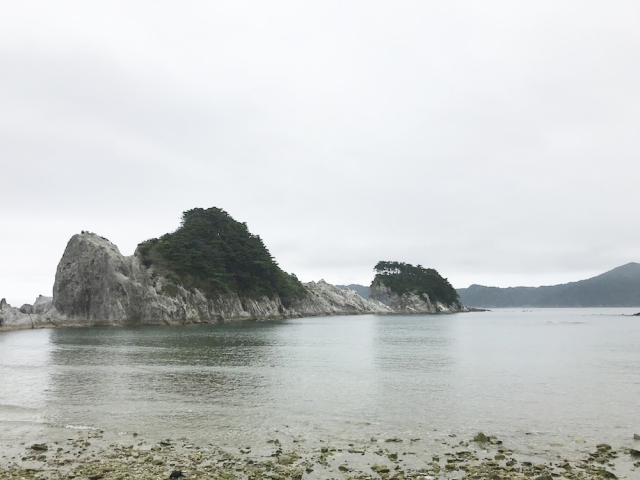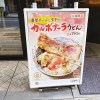
Earthquakes have always been largely a guessing game, and this one is no different.
At about 11 p.m. on the evening of Saturday, 13 February, a 7.3 Magnitude earthquake hit the Northeast Region (Tohoku) of Japan. It was the most violent quake Japan had seen in a while but the eeriest part is that it was said to be an aftershock of the 2011 Tohoku earthquake that occurred almost exactly ten years earlier.
It doesn’t seem crazy that an aftershock could be so delayed since ten years is literally a blink of the eye in geological terms, and some major quakes around the world have reportedly caused aftershocks that continue for centuries. Still, how was this one determined to be an aftershock so quickly?
The Japan Meteorological Agency (JMA), who issues earthquake warnings and reports, has three criteria when determining which quakes are aftershocks:
1) Earthquakes directly caused by large earthquakes
2) Earthquakes triggered by situations caused by large earthquakes
3) All earthquakes around the epicenter of a large earthquake, 210,000 square-kilometers (81,000 square-miles) in the case of the Tohoku Earthquake
To know more about what that means, we need to understand the basic mechanics behind the the Tohoku earthquake. It was caused by the slow movement of the tectonic plate under the Pacific ocean sliding underneath the plate on whose edge Japan sits. “Sliding” is putting it mildly, however, as massive amounts of pressure are constantly being applied to miles of jagged rock.
▼ A 3-D diagram of the various plates grinding against each other right next to Japan
Every once in a while too much pressure builds up where these plates meet and something’s got to give, resulting in the sudden and powerful movements of earthquakes. However, tectonic plates can be hard to envision, so instead let’s apply the JMA’s criteria to this video of a car ramming its way out of a Tesco parking lot.
▼ The video is cued ahead to the moment of ramming
For illustrative purposes, let’s say that the blue car is the Pacific plate and all the other parked cars are Japan. That car is going to leave Tesco one way or another and, much like with an earthquake, the amount of damage it will cause in doing so is anyone’s guess.
The first strike of the blue car can be considered the main quake which clears a path for it to leave. Had that strike caused one of the other cars to flip over or roll into another car then these incidental impacts would have been considered aftershocks of the initial strike. That’s the easiest to understand in the sense of an aftershock as something that is the direct result of an action as described in the first criterion.
In addition, if long after the blue car drove off, the axel on one of the struck cars suddenly gave out and its wheel fell off, that would be considered an aftershock by the second part of the criteria. This also makes sense because despite the delay and fact that it wasn’t direct, the damage was still very likely caused by the initial attack.
However, if the next day another car is damaged in that same section of the parking lot, it would still be considered an aftershock by the final criterion. Obviously, this is where things get problematic.
The third part sounds ridiculous in the case of the video because we can clearly see what is happening and judge if causality exists. With tectonic plates, however, we are largely going blind and have to make some assumptions based on very limited information, kind of like listening to that video with your eyes closed and no explanation about what’s happening.
That being said, sensing technology is getting better all the time, and we can at least get a good idea of how each each earthquake came about. The main 2011 earthquake originated from movement in the area where the two plates make contact.
▼ A simple visualization of how the 2011 Tohoku Earthquake happened; try to ignore the heavy breathing or whatever that sound is
Other large aftershocks were caused by breaking in the plate that Japan sits on top of. It would be like if too many people used that science center exhibit and the brown plate suddenly cracked in one place. That’s reasonable, but in the case of the 2021 quake, the crack is believed to have occurred within the Pacific plate, or inside the part of the science exhibit’s blue sheet that was underneath the brown. In the case of the Tesco video, it’d be as if the blue car just suddenly blew up a month later.
Since we’re talking about one of the strongest earthquakes the modern world has ever seen, it’s probably a pretty reasonable assumption that the 2011 earthquake indeed had caused the stress and/or damage within the Pacific plate that led to the 2021 quake. But that is still just an assumption which means that the first of second parts of the criteria are probable but uncertain, and the only one we know for sure is the very vague third criterion.
Since the stakes are always high when dealing with these natural disasters, it really pays to be sure. Even the JMA said on 15 February that they are considering revising their criteria in light of the recent activity, but with current technological limitations there might not be much more they can do right now.
In the meantime, all the rest of us can do is what we’ve always hopefully been doing, which is keeping supplies at the ready and knowing what to do and where to go in the event of an earthquake.
Source: Sankei Biz, Iza, My Game News Flash
Top image: ©SoraNews24
● Want to hear about SoraNews24’s latest articles as soon as they’re published? Follow us on Facebook and Twitter!

 Is Japan about to be rocked by a big earthquake?
Is Japan about to be rocked by a big earthquake? Osaka earthquake: Scenes show damage from strongest tremor to hit the region in decades
Osaka earthquake: Scenes show damage from strongest tremor to hit the region in decades 97 percent of Kumamoto convenience stores open for business just three days after major quakes
97 percent of Kumamoto convenience stores open for business just three days after major quakes Anime figures damaged in earthquake? Tokyo manufacturer offers to repair them for free
Anime figures damaged in earthquake? Tokyo manufacturer offers to repair them for free Messages of support from Taiwan warm the hearts of Kumamoto earthquake victims
Messages of support from Taiwan warm the hearts of Kumamoto earthquake victims Red light district sushi restaurant in Tokyo shows us just how wrong we were about it
Red light district sushi restaurant in Tokyo shows us just how wrong we were about it Japan’s massive matcha parfait weighs 6 kilos, contains hidden surprises for anyone who eats it
Japan’s massive matcha parfait weighs 6 kilos, contains hidden surprises for anyone who eats it Historical figures get manga makeovers from artists of Spy x Family, My Hero Academia and more
Historical figures get manga makeovers from artists of Spy x Family, My Hero Academia and more Haku is…Chihiro’s dead brother? Studio Ghibli fans blown away by Spirited Away theory
Haku is…Chihiro’s dead brother? Studio Ghibli fans blown away by Spirited Away theory Pokémon Sleep camping suite and guestrooms coming to Tokyo Hyatt along with giant Snorlax burgers
Pokémon Sleep camping suite and guestrooms coming to Tokyo Hyatt along with giant Snorlax burgers Tokyo Tsukiji fish market site to be redeveloped with 50,000-seat stadium, hotel, shopping center
Tokyo Tsukiji fish market site to be redeveloped with 50,000-seat stadium, hotel, shopping center Japanese ramen restaurants under pressure from new yen banknotes
Japanese ramen restaurants under pressure from new yen banknotes Limited-edition Carbonara Udon will anger noodle purists and pasta lovers 【Taste test】
Limited-edition Carbonara Udon will anger noodle purists and pasta lovers 【Taste test】 Anime girl English teacher Ellen-sensei becomes VTuber/VVTUber and NFT
Anime girl English teacher Ellen-sensei becomes VTuber/VVTUber and NFT Studio Ghibli releases new action figures featuring Nausicaä of the Valley of the Wind characters
Studio Ghibli releases new action figures featuring Nausicaä of the Valley of the Wind characters McDonald’s new Happy Meals offer up cute and practical Sanrio lifestyle goods
McDonald’s new Happy Meals offer up cute and practical Sanrio lifestyle goods All-you-can-drink Starbucks and amazing views part of Tokyo’s new 170 meter-high sky lounge
All-you-can-drink Starbucks and amazing views part of Tokyo’s new 170 meter-high sky lounge More foreign tourists than ever before in history visited Japan last month
More foreign tourists than ever before in history visited Japan last month French Fries Bread in Tokyo’s Shibuya becomes a hit on social media
French Fries Bread in Tokyo’s Shibuya becomes a hit on social media New private rooms on Tokaido Shinkansen change the way we travel from Tokyo to Kyoto
New private rooms on Tokaido Shinkansen change the way we travel from Tokyo to Kyoto Starbucks reopens at Shibuya Scramble Crossing with new look and design concept
Starbucks reopens at Shibuya Scramble Crossing with new look and design concept Studio Ghibli glasses cases let anime characters keep an eye on your spectacles
Studio Ghibli glasses cases let anime characters keep an eye on your spectacles Beautiful Ghibli sealing wax kits let you create accessories and elegant letter decorations【Pics】
Beautiful Ghibli sealing wax kits let you create accessories and elegant letter decorations【Pics】 Studio Ghibli releases Kiki’s Delivery Service chocolate cake pouches in Japan
Studio Ghibli releases Kiki’s Delivery Service chocolate cake pouches in Japan New definition of “Japanese whiskey” goes into effect to prevent fakes from fooling overseas buyers
New definition of “Japanese whiskey” goes into effect to prevent fakes from fooling overseas buyers Our Japanese reporter visits Costco in the U.S., finds super American and very Japanese things
Our Japanese reporter visits Costco in the U.S., finds super American and very Japanese things Studio Ghibli unveils Mother’s Day gift set that captures the love in My Neighbour Totoro
Studio Ghibli unveils Mother’s Day gift set that captures the love in My Neighbour Totoro New Japanese KitKat flavour stars Sanrio characters, including Hello Kitty
New Japanese KitKat flavour stars Sanrio characters, including Hello Kitty New Pokémon cakes let you eat your way through Pikachu and all the Eevee evolutions
New Pokémon cakes let you eat your way through Pikachu and all the Eevee evolutions Disney princesses get official manga makeovers for Manga Princess Cafe opening in Tokyo
Disney princesses get official manga makeovers for Manga Princess Cafe opening in Tokyo Sales of Japan’s most convenient train ticket/shopping payment cards suspended indefinitely
Sales of Japan’s most convenient train ticket/shopping payment cards suspended indefinitely Sold-out Studio Ghibli desktop humidifiers are back so Totoro can help you through the dry season
Sold-out Studio Ghibli desktop humidifiers are back so Totoro can help you through the dry season Japanese government to make first change to romanization spelling rules since the 1950s
Japanese government to make first change to romanization spelling rules since the 1950s Ghibli founders Toshio Suzuki and Hayao Miyazaki contribute to Japanese whisky Totoro label design
Ghibli founders Toshio Suzuki and Hayao Miyazaki contribute to Japanese whisky Totoro label design Doraemon found buried at sea as scene from 1993 anime becomes real life【Photos】
Doraemon found buried at sea as scene from 1993 anime becomes real life【Photos】 Tokyo’s most famous Starbucks is closed
Tokyo’s most famous Starbucks is closed One Piece characters’ nationalities revealed, but fans have mixed opinions
One Piece characters’ nationalities revealed, but fans have mixed opinions We asked a Uniqlo employee what four things we should buy and their suggestions didn’t disappoint
We asked a Uniqlo employee what four things we should buy and their suggestions didn’t disappoint Princesses, fruits, and blacksmiths: Study reveals the 30 most unusual family names in Japan
Princesses, fruits, and blacksmiths: Study reveals the 30 most unusual family names in Japan Strong earthquake hits Hokkaido in Japan, dozens missing and injured
Strong earthquake hits Hokkaido in Japan, dozens missing and injured Hokkaido Earthquake Day 5: Our Hokkaido-based reporter shares his experiences in an affected area
Hokkaido Earthquake Day 5: Our Hokkaido-based reporter shares his experiences in an affected area Japanese teachers confiscate students’ cell phones following Osaka earthquake, get slammed online
Japanese teachers confiscate students’ cell phones following Osaka earthquake, get slammed online Strong earthquake hits Japan as anniversary of Fukushima disaster approaches【Photos, Videos】
Strong earthquake hits Japan as anniversary of Fukushima disaster approaches【Photos, Videos】 Man reported missing after 2011 Tohoku earthquake found alive and well
Man reported missing after 2011 Tohoku earthquake found alive and well Pokémon Lapras appears on streets, in lakes of Miyagi as part of new tourism ambassador role
Pokémon Lapras appears on streets, in lakes of Miyagi as part of new tourism ambassador role M6.3 earthquake hits Japan, anime fans rush to tweet photos of damage to figure collections
M6.3 earthquake hits Japan, anime fans rush to tweet photos of damage to figure collections Continuing earthquakes in Kumamoto have moved a GPS observation station nearly one meter
Continuing earthquakes in Kumamoto have moved a GPS observation station nearly one meter National Film Archive of Japan releases shocking historical videos of 1923 Great Kanto Earthquake
National Film Archive of Japan releases shocking historical videos of 1923 Great Kanto Earthquake Mystery stink haunts Kanagawa Prefecture, worries seismologist
Mystery stink haunts Kanagawa Prefecture, worries seismologist Yamazaki Bakery once again donates bread to evacuation centers at almost inhuman speeds
Yamazaki Bakery once again donates bread to evacuation centers at almost inhuman speeds Japan surprised to find Justin Bieber and world praying for them
Japan surprised to find Justin Bieber and world praying for them Five years on, Google Maps updates images of areas affected by 2011 earthquake and tsunami
Five years on, Google Maps updates images of areas affected by 2011 earthquake and tsunami 70 Japanese students volunteer to help clean Canada’s shores of Tohoku Tsunami debris
70 Japanese students volunteer to help clean Canada’s shores of Tohoku Tsunami debris As earthquakes rock the region, Kyushu Shinkansen commercial is more poignant than ever【Video】
As earthquakes rock the region, Kyushu Shinkansen commercial is more poignant than ever【Video】 Tokyo Tower displays special message ahead of Tohoku earthquake and tsunami anniversary
Tokyo Tower displays special message ahead of Tohoku earthquake and tsunami anniversary
Leave a Reply